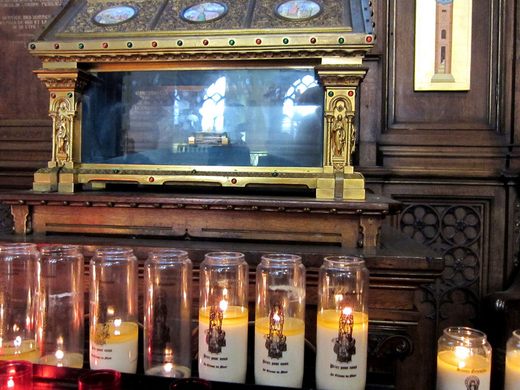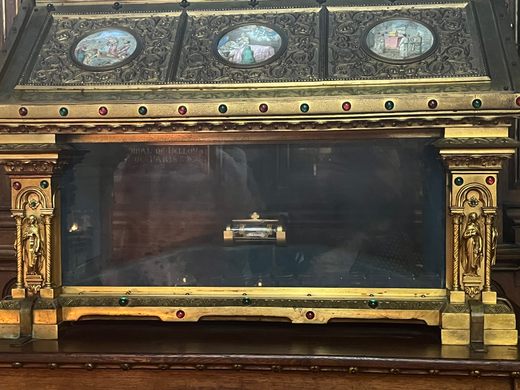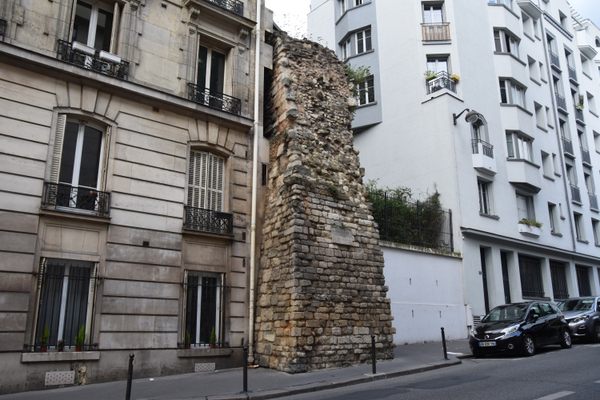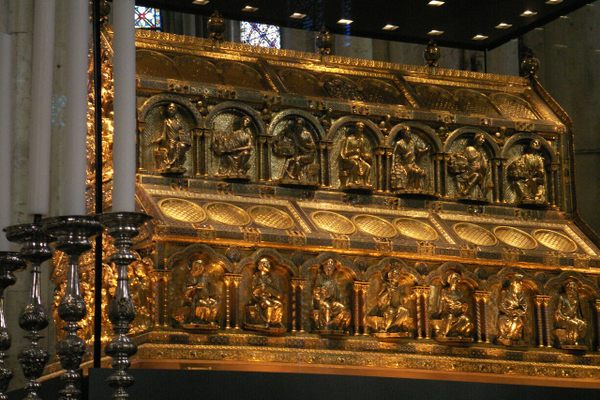The Relics of St. Genevieve at St-Etienne-du-Mont
The remaining relics of the patroness of Paris lie in a chapel under a striking double spiral staircase.
The majority of the relics of St. Genevieve were publicly burnt during the French Revolution, but some small surviving pieces, as well as the rock her tomb rested on, are enshrined at St-Étienne-du-Mont.
The church itself on the Montagne Sainte-Geneviève started construction in 1517 and was finished in 1627. The tombs of Blaise Pascal and Jean Racine are also in the church. Jean-Paul Marat was buried in one of the two church cemeteries, although neither of them exist anymore.
Following the French Revolution, the church was transformed, much like its neighbor the Pantheon, into a shrine of reason, called the “Temple of Filial Piety.” This was also around the time that St. Genevieve, patron saint of Paris, had her relics destroyed. What was saved is in a small chapel in the reconsecrated church, including her burial stone encased in a gold lattice and some of the Saint’s minor remains housed in a glass cylinder.
The double spiral staircase with the loft above is called a jube. It’s a type of rood screen that originally separated the laity from the high altar. This one was installed in 1530 and created by Biart la Père. Most rood screens were removed during the Counter-Reformation or after Vatican II. It is the only surviving example in Paris.
Know Before You Go
From the Cardinal Lemoine metro stop, walk up the hill on Rue Clovis. The church is across the street from the Pantheon.


























Follow us on Twitter to get the latest on the world's hidden wonders.
Like us on Facebook to get the latest on the world's hidden wonders.
Follow us on Twitter Like us on Facebook